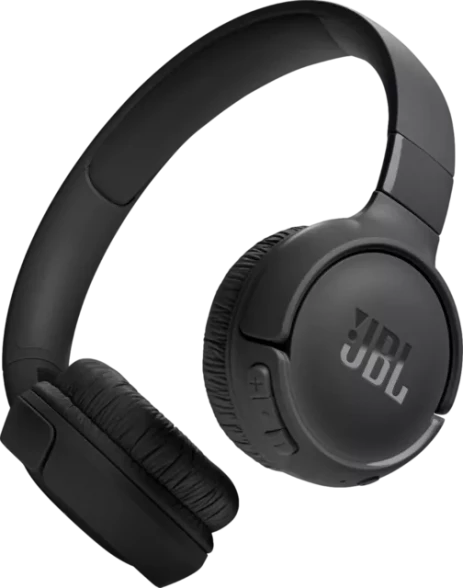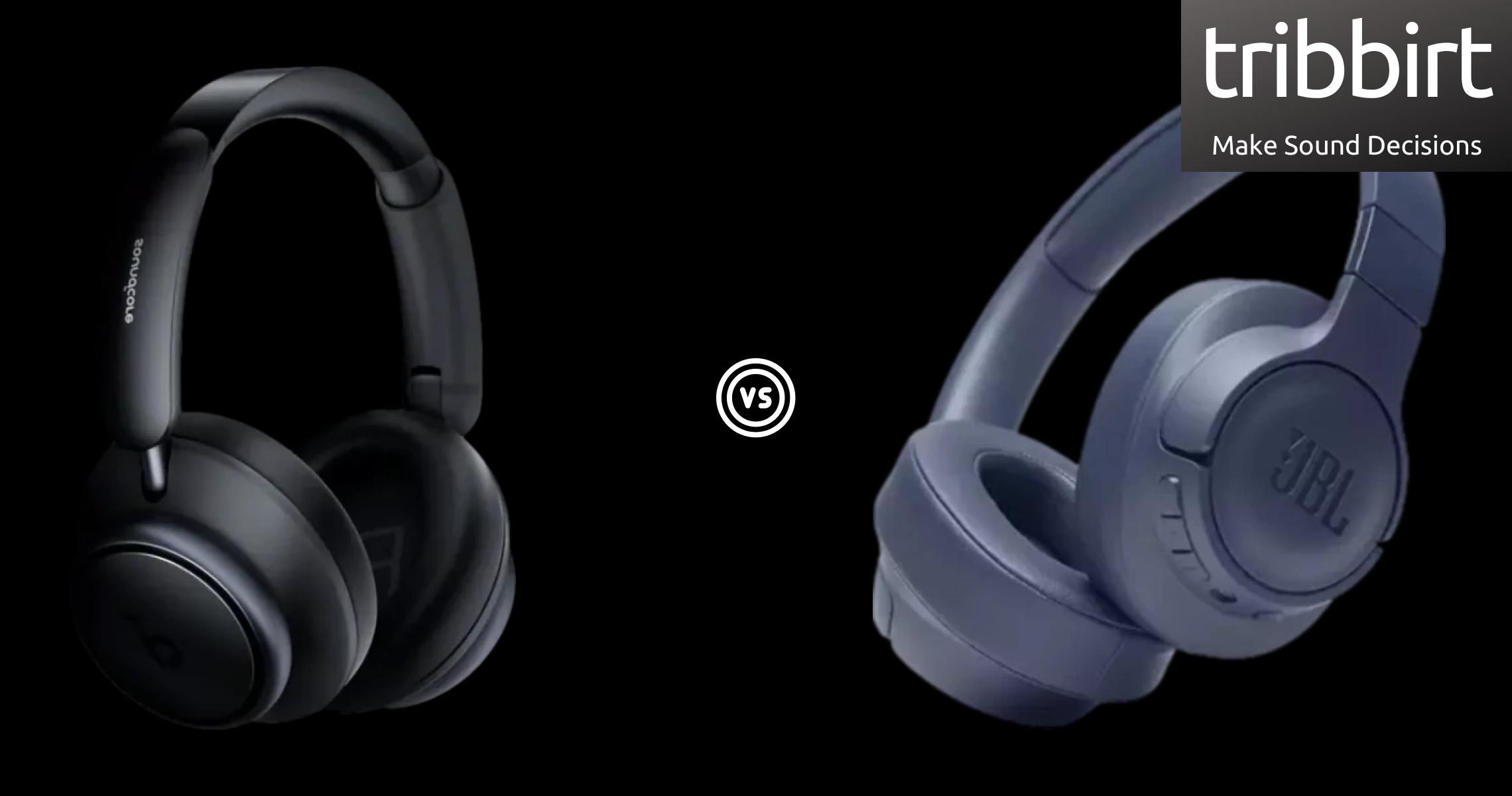JBL Tune 710BT have a weight of 220g, these weigh below 320g, which we consider as the highest average a headphone should weigh for comfort during long use. We consider a lower weight better for the reason that lighter devices are more comfortable to move with. JBL Tune 520BT, at 160g
are lighter than the JBL Tune 710BT with a difference -60g
Detachable cables are cables that have connectors on both ends.
One end goes into your headphone earpieces, while the other end is inserted into an audio source. Some new headphones, and not just the expensive ones, are coming with detachable cables, JBL Tune 710BT are one of those. With a detachable cable, JBL Tune 520BT too can use alternative cables and if the cable is pulled, it will pop out instead of breaking.
JBL Tune 710BT are foldable, which makes them more portable. Foldable headphones are easier to transport and take up less storage space. The JBL Tune 520BT too can fold up, foldable headphones can reduce their size by 60% to 70% when folded.
Twisted headphone cables can be a great source of annoyance and inconvenience, JBL Tune 710BT's cable is designed to minimize tangling. Constant twisting of the cables can also lead to microfractures in the copper wires, affecting sound quality, or
rendering your headphones defective. JBL Tune 520BT too have a cable designed to help prevent tangles.
A long cable ensures more freedom of movement, but remember that every cable based on the conducting material used has a certain amount of parasitic resistance, inductance, and capacitance. How much depends on the length and construction. JBL Tune 710BT comes with a 1.2meters cable.
JBL Tune 520BT comes with a 1.2meters cable. Almost any cable should be fine in sound quality If you're looking at lengths up to 2 - 3 meters. On-ear headphones have smaller earpads that sit on top of your ears, this JBL Tune 710BT comfortably rests on top of your outer ears.
As it doesn't block out everything from the outside world, it's preferred in places like office environments and recommended for outdoor activities. JBL Tune 520BT too have an on-ear form. These headphones don't seal your ears and are usually lightweight and sleek.
JBL Tune 710BT have stereo speakers, devices with stereo speakers deliver sound from separate channels on both left and right sides, this creates a richer sound and a better listening experience. The JBL Tune 520BT also have stereo speakers
Passive Noise Cancellation uses well-designed ear cups to seal out environment noise. This is used for both in-ear earphones and over-ear headphones where the headphone itself will keep surrounding noise out.
The JBL Tune 710BT sits tightly in place, creating an acoustic seal that reduces background noise and prevents your music from leaking out. Both of these devices have passive noise reduction which means that also the JBL Tune 520BT isolates you from ambient noise instead of actively using technology to cancel it out. Low-frequency response measures if and how well an audio device reproduces low audible frequencies and if it makes any changes to the signal while at it.
JBL Tune 710BT's lowest frequency is at 20Hz, the lower the low-frequency response, the stronger and juicier the bass. JBL Tune 520BT's lowest frequency is at 20Hz, this means that
both devices produce equal bass
High frequency response measures if and how well a particular audio device reproduces high audible frequencies and if it makes any changes to the signal while at it. JBL Tune 710BT's highest frequency is at 20,000Hz, the higher the high-frequency response, the clearer and crispier the treble.
JBL Tune 520BT's highest frequency is at 20,000Hz, this implies that
both devices produce equal treble
Sound pressure is the average variation in atmospheric pressure caused by the sound, the sound level .i.e how loud something is can be perceived differently by different people so we need to have the means to get an objective measurement of sound level expressed in numerical terms.
The sound pressure level, SPL, is the pressure level of a sound, measured in decibels, dB, JBL Tune 710BT's measurement is 103dB/mW. Devices with a higher sound pressure level are generally louder when supplied with any given audio source.
JBL Tune 520BT's sound pressure level measurement is 103dB/mW. The driver unit is the component that produces sound in the device, its size dictates the loudness of the headphone. JBL Tune 710BT driver unit is 40mm in diameter, bigger drivers are more powerful and can produce better bass.
JBL Tune 520BT driver unit is 30mm in diameter,
which means that they have a smaller driver unit than that of JBL Tune 710BT by 10mm
, many people have a misconception that driver units of a bigger size automatically produce better sound quality.
However, large drivers usually have difficulty reproducing high frequencies so yeah, larger drivers can generate louder sound, but this does not mean that they produce better sound. Defined as the device's resistance to the electromagnetic current, when electricity flows through a conductor, it experiences electrical resistance that counters the flow of current.
The resistance of a conductor is measured in ohms. JBL Tune 710BT's impedance is 32Ohms, the lower the impedance, the easier it is to get higher volume and requires less power. JBL Tune 520BT's impedance is 32Ohms.
The impedance of earbuds is the electrical resistance of the driver unit present on the inside. If your headphones play wirelessly, cancel ambient noise, or enhance your listening experience with active features, their battery life will reduce over time. The device's battery life is given by the manufacturer, with longer battery life, you get to use it for longer and have to charge the device less often.
JBL Tune 710BT's battery life is 50 hours
JBL Tune 520BT's battery life is 57 hours. Each time you recharge your headphones, they get a little less listening time. The effect is barely noticeable at first.
But over a few years, you may find that your device, no longer plays for long like it used to. It takes 2 hours to fully charge the JBL Tune 710BT's battery. It is recommended to fully charge the battery before using the headphones for the first time or when they have been unused for extended periods.
JBL Tune 520BT takes 2 hours to fully charge the battery
JBL Tune 710BT have a battery level indicator, an indicator shows you when the device has a low battery. The battery indicator lights show the charging status of your headphones. JBL Tune 520BT too have a battery level indicator, charging indicators allow you to determine the charging state of your headphones, whether fully charged, or the battery is running low.
JBL Tune 710BT, the device supports a wireless charging standard such as Qi. To charge the device, you simply put it down on a compatible charging pad. Battery power, or battery capacity, represents the amount of electrical energy that a battery can store.
JBL Tune 710BT's battery power is 690mAh, more battery power can be an indication of longer battery life. JBL Tune 520BT's battery power is 450mAh. A rechargeable battery is a type of electrical battery that can be charged, discharged into a load, and recharged many times, as opposed to a disposable or primary battery, which is supplied fully charged and discarded after use.
JBL Tune 710BT's battery can be recharged and used over again. The JBL Tune 520BT too have a rechargeable battery. JBL Tune 710BT can be used wirelessly, wireless devices allow you more freedom of movement.
The JBL Tune 520BT also can be used wirelessly
Bluetooth is a wireless technology standard that allows data transfers between devices placed in close proximity, using short-wavelength, ultra-high frequency radio waves. JBL Tune 710BT has a v5
JBL Tune 520BT has a Bluetooth version of v5.3. Newer versions provide faster data transfers.
JBL Tune 710BT support USB TYPE-C, an industry-standard connector for transmitting both data and power on a single cable. The USB-C plug is now part and parcel of most current laptops, phones, and tablets, it features reversible plug orientation and cable direction. JBL Tune 520BT too have USB TYPE-C
Bluetooth is a short-range wireless technology standard that is used for exchanging data between fixed and mobile devices over short distances.
The JBL Tune 710BT can connect at a 10meters distance via Bluetooth or infrared to another device. The JBL Tune 520BT can connect at a 10meters distance via Bluetooth
Being an industry standard audio plug, a standard 3.5mm male connector is suitable for use with all MP3 players and computer sound cards. This means that it is commonly used in stereo headphones to your phone or connecting your phone to an external amplifier, sound bars, your car radio, etc.
JBL Tune 710BT has this connector giving it a wider range of connectivity with most of the sound devices out there. All plugs have at least a tip and sleeve with the number of rings that stand as a differentiating factor. JBL Tune 710BT have only 1 microphones, more microphones result in better sound quality and enable the device to filter out background noise.
The JBL Tune 520BT microphones are only 2. JBL Tune 710BT have a mute function, they have an option to mute/unmute a conversation directly from the device. The mute function means that you unilaterally turn off the microphone, but you can still hear the other party's voice.
JBL Tune 710BT support multipoint, which allows you to link to more Bluetooth devices and switch between them. For example, you can easily switch calls from one device to another without having to manually disconnect and reconnect. The JBL Tune 520BT support multipoint count.
Bluetooth multipoint would come in handy because you can be on one call without missing notifications coming from another device. There is a control panel on the JBL Tune 710BT body, so you can easily access the volume control or remote without having to interact with a cable or another device it's connected to. The JBL Tune 520BT too have a control panel on them.
JBL Tune 710BT can be used as a headset. A headset is one headphone or pair with a built-in microphone. Headsets can be used for apps that require communication i.e.
Zoom, Google Meet, Skype, games with voice chat, mobile phones, etc. JBL Tune 520BT can be used as a headset. since they have a built-in microphone













